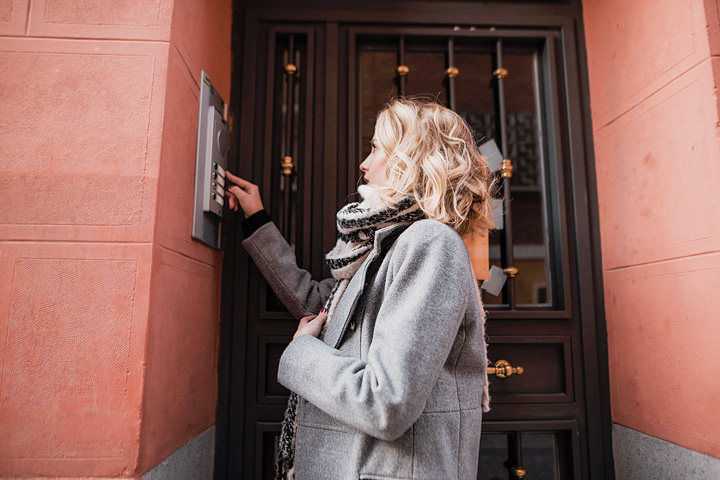The Importance of Security System Upgrades for Aging Infrastructure in Older Apartment Buildings
 Despite the crucial role security systems play in ensuring tenant safety and satisfaction, many aging apartment buildings use outdated security infrastructure. These older systems are often inefficient and less effective than modern solutions. They may also fail to meet state regulations for housing, which could lead to fines. Security system upgrades are crucial for essential for maintaining compliance, safety, and tenant satisfaction.
Despite the crucial role security systems play in ensuring tenant safety and satisfaction, many aging apartment buildings use outdated security infrastructure. These older systems are often inefficient and less effective than modern solutions. They may also fail to meet state regulations for housing, which could lead to fines. Security system upgrades are crucial for essential for maintaining compliance, safety, and tenant satisfaction.
In this article, we’ll help you understand when security system upgrades are necessary, the benefits these improvements bring to building management and tenant satisfaction, and the steps involved in executing a successful upgrade process. By addressing these key areas, property owners can enhance the security and appeal of their aging apartment buildings and streamline building management.
When to upgrade
Determining the right time to upgrade security systems in aging apartment buildings is crucial for maintaining safety and tenant satisfaction.
Signs of outdated systems
- Falling out of compliance with state laws. Apartments must meet specific guidelines regarding intercom, security cameras, locking mechanisms, and more. Building owners must stay aware of the current requirements and ensure their properties meet regulations.
- Frequent Malfunctions: Regular breakdowns and repairs signal that systems are aging.
- Tenant Complaints: Increasing concerns about security from residents indicate the current system is inadequate.
- Security Breaches: A rise in break-ins or unauthorized entries points to failing security measures.
- Compatibility Issues: Inability to integrate with modern devices and technologies shows obsolescence.
Assessments and audits
Performing an audit of your existing security infrastructure will help you understand what the weaknesses are and whether it’s time to upgrade. Here are some ways to assess your current system’s performance.
- Regular Security Audits: Engage professionals to evaluate the current security setup.
- Tenant Feedback: Conduct surveys to gather residents’ perceptions and concerns about security.
- Technological Evaluation: Stay informed about advancements in security technology to identify potential upgrades.
Benefits of security system upgrades
Improved building management
Upgrading security systems enhances overall building management by providing advanced monitoring capabilities and seamless integration with other building systems. Modern systems offer real-time alerts and incident tracking, enabling prompt responses to security breaches and maintenance issues. This leads to more efficient and effective management, reducing the workload on building staff.
Increased tenant satisfaction
Enhanced security measures will boost tenant satisfaction by fostering a safer living environment. When residents feel secure, they are less likely to complain about safety concerns and more likely to stay longer, reducing turnover rates. A secure building also becomes more attractive to potential tenants, improving occupancy rates and the building’s reputation.
Operational efficiency
Modern security systems are designed to be more reliable and require less maintenance, resulting in lower long-term costs. These systems often come with energy-efficient features that contribute to overall cost savings. Automation and advanced technologies streamline operations, making it easier for management to oversee the building’s security and respond quickly to any issues, ultimately leading to a more efficient and cost-effective operation.
The upgrade process
Planning and assessment
Begin by conducting a thorough needs assessment to identify security gaps and determine the scope of the upgrade. Establish a budget and timeline, and research suitable security solutions that meet the building’s specific requirements.
Engaging professionals
Hire reputable security consultants and contractors to guide the upgrade process. Obtain multiple quotes to ensure competitive pricing and evaluate options to select the best fit for your building.
Implementation
Implement the upgrade in phases to minimize disruption to residents. Ensure management and staff receive proper training on the new systems. Communicate with tenants about the upgrade schedule and the benefits they can expect.
Post-upgrade evaluation
Monitor the performance of the new security systems to ensure they meet expectations. Gather feedback from tenants to identify any remaining issues and make necessary adjustments to optimize the system’s effectiveness.
Modernization boosts satisfaction and efficiency
Security system upgrades in aging apartment buildings are essential for ensuring the safety and satisfaction of tenants and compliance with state housing laws. Ultimately, investing in security upgrades not only protects residents but also improves the overall appeal and functionality of the building. Property managers should routinely assess their systems and take proactive steps towards modernization to maintain a secure and thriving residential environment.
NEXT STEPS:
- Contact us today to learn more about security and surveillance.
- Learn more about what home and business security means to us.
- Subscribe to our blog to stay informed about the latest security news and insight.

















